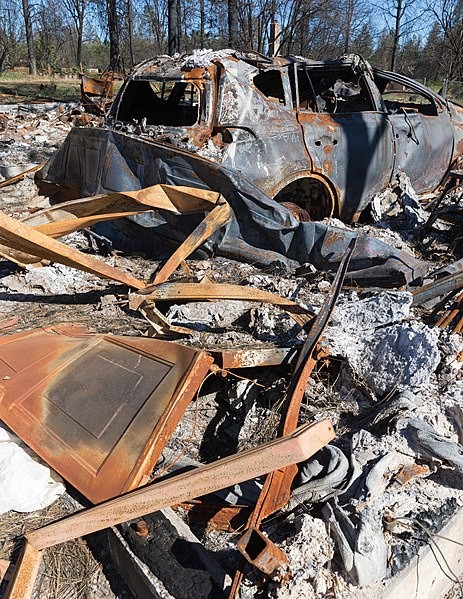The town of Paradise, California, was devastated by the most devastating wildfire in history about four years ago. Residents may rebuild "better, safer, and more resilient than before" thanks to a new project.

If anybody understands the expression "paradise gone," it's the people of one California hamlet who have watched the devastation caused by wildfires.
The Disaster
Nearly four years ago, the deadliest and most devastating wildfire in California history stormed into town and almost wiped it out. The Camp Fire destroyed Paradise, located 170 miles northeast of San Francisco and 90 miles north of Sacramento, in November 2018, burning 18,000 homes, businesses, and other structures and displacing many of the town's 26,500 people. As a result of the fire's 153,336-acre route of destruction, at least 85 people were killed, and more than a dozen were injured.
In the years following the disaster, Paradise was gradually rebuilt with the assistance of a new program to prevent future fire disasters. Paradise residents are participating in the Wildfire Prepared Home program, which is run in collaboration with the non-profit Insurance Institute for Business and Home Safety, to ensure that their new homes are built with fire-resistant materials and meet higher building standards established for wildfire-prone areas of the country.
Recent Update
At a recent news conference, Paradise Mayor Steve Crowder stated, "We heal as a community." "It is critical that we rebuild better, safer, and more resilient than before."
New homes built in Paradise will be required to obtain the IBHS's Wildfire Prepared Home designation as of July 14. Builders must meet many new guidelines, such as installing fire-resistant vents, gutters, roofs, and siding materials.
"We have established stricter municipal rules requiring all new houses to meet the wildfire designated housing standard," Crowder explained.
The IBHS wildfire-proofing housing system targets risky parts of new dwellings, such as roofs, where fires might begin.
"It's really essential for homeowners to maintain their roof, to clean the debris and pine needles and everything off the roof," Faraz Hedayati, an IBHS research engineer, told AccuWeather's Bill Waddell.
Another critical step in the wildfire-proof building process is clearing the area around the house of any combustible materials. This keeps flying embers from starting fires in dwellings.
"They bounce back when they contact the wall," Hedayati explained. "And by clearing that area of debris or vegetation, we ensure that those embers have nothing to ignite."
IBHS is collaborating with the Federal Emergency Management Agency (FEMA) on a hazard mitigation grant program that will assist homeowners in modifying their homes to attain the wildfire-ready classification for the 1,400 homes that have already been rebuilt in Paradise.
Improved Structures
The Wildlife Prepared Home standards were recently put into code by Paradise's town council, offering a consistent strategy to decreasing wildfire danger for residents who have returned to town. In June, approximately 8,000 people had returned, and 350 companies had opened. By 2035, the population is expected to be 75% of what it was before the fire.
According to IBHS President and CEO Roy Wright, who lost family members in the Camp Fire, the town's repopulated population may set the pattern for the rest of California.
"Wildfire Prepared Home gives a clear method to lessen the chance of having to rebuild from ashes for other communities in California," Wright added.
Return to Paradise
The return to Paradise will not be without risk, as wildfires in California are predicted to increase in quantity during July. According to the US Drought Monitor, the whole state suffers drought conditions. Drought Watch. Approximately 60% of California is experiencing severe or exceptional drought. According to officials, the continuous threat emphasizes the necessity for wildfire-resistant housing.
"We will witness more severe flames... we believe these efforts will significantly lower the risk," said Hedayati.
Related Article : Dry Thunderstorms in California may Spark More Wildfires
For more environmental news, don't forget to follow Nature World News!
© 2026 NatureWorldNews.com All rights reserved. Do not reproduce without permission.





